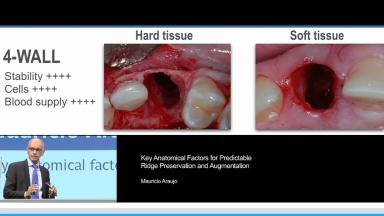
Key Anatomical Factors for Predictable Ridge Preservation and Augmentation - Congress Lectures - Home
Key Anatomical Factors for Predictable Ridge Preservation and Augmentation
The management of ridge alterations that take place following tooth extraction is of great interest for implant dentistry. The aim of this presentation is to demonstrate the pivotal role of the ridge/defect anatomy in the clinical outcome of ridge preservation and augmentation procedures. Clinical studies presented describe the key anatomical features of the basal bone, alveolar process, and edentulous ridge. The minimum amount of bone tissue for an esthetic and functionally successful implant is of paramount importance in implant treatment, and as a consequence the relationship between the anatomy of a bone defect and the outcome of ridge preservation or augmentation renders the best clinical approach for dealing with the post-extraction bone loss.

At the end of this Congress Lecture you should be able to…
- describe the biological cascade that occurs in the alveolar socket following tooth extraction
- explain the consequences of ridge alteration and its impact on implant planning in postextraction sites
- recognize the difference in augmentation outcomes in self-contained and non-contained bone defects
- Duration
- 31 minutes
- Source
- ITI World Symposium 2017
- CPD/CME
- 0.52 hours
- Purchase price
- 16 Academy Coins
Share this page
Download the QR code with a link to this page and use it in your presentations or share it on social media.
Download QR code







